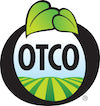Increase Your Food Safety: 5 Steps to Food Traceability
Where does your food come from? For most of us, the logical answer might be "the store." But where does it come from, really? Have you seen it growing in the ground, or grazing on grass? Have you visited the factory where ingredients are mixed together and packaged? Food traceability is an important aspect of our food safety, and you don't have to be the buyer at the supermarket to know where your food comes from.
Foodborne illness outbreaks have become the norm in our country, with new outbreaks reported weekly. Genetically modified organisms, chemical food additives, pesticides, artificial ingredients and even traces of toxic heavy metals can all be found in our food. Most of these issues are related to large-scale food production, and it's also why so many Americans have begun looking into where exactly their food comes from. Here are some tips you may find useful in exploring your own food traceability:
1. Buy local. By supporting local farmers and ranchers, you not only stimulate your local economy and cut down on the use of fossil fuels used for long-distance deliveries, but you're also more closely connected to your food source. This means you can visit local fruit and vegetable growers, egg farms, dairy or cattle ranches. You can see first-hand whether or not your food meets your level of quality standards; and there's no guesswork in tracing contaminated food back to its source. And while not a full proof caveat, locally raised/grown foods are often done so on small, family-scale farms where more care is given to avoid contamination risks.
2. Support artisan crafters. Like buying fruits and vegetables or meat and dairy from local producers, you can also find a growing number of local businesses making small-batch preserves, breads, honey, even chocolates. The same care that goes into small-scale farming is often mirrored in artisan-crafted foods and beverages. Many will gladly let you tour their facilities and some even host tasting events on site (like wineries). Get to know your local food producers and support them for food safety and the benefits of a thriving artisan community.
3. Decrease processed food consumption. Processed foods can contain dozens of ingredients. These include stabilizers, flavorings and colorings, to name a few. Most times, multiple ingredients—especially the unnatural kind—can mean just as many original sources, making traceability virtually impossible.
4. Avoid GMOs. Genetically modified organisms are highly controversial and have been connected with an increasing number of health risks including digestive disorders, autism, organ damage, and a recent study found a serious connection to cancer. GMOs require large amounts of pesticides—or are technically pesticides themselves—which also increases the risk of health problems. They are banned or strictly regulated throughout the rest of the industrialized world for these reasons. GMO grains like corn and soy are made into a number of processed ingredients such as high fructose corn syrup and artificial flavorings. It can be difficult to trace these ingredients back to their source since they are so highly refined, which is why avoiding them altogether is recommended.
5. Research. With the internet and scores of amazing smart phone apps available nowadays to help connect you more closely with your food, you can also research brands, ingredients and sources. Ratings like Animal Welfare Approved and The Non-GMO Project are third party vetting systems that can help you identify quality products and brands and trace the food you're about to put in your body back to its source.
Image: DC Central Kitchen
Leave a comment
Comments will be approved before showing up.



